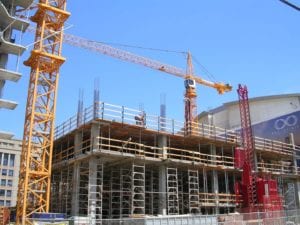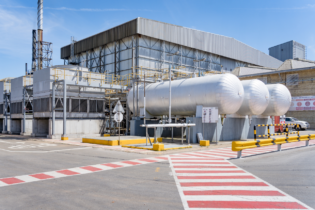
The Gauteng Provincial Government has announced a major drive, which is a first of its kind, to convert some of its public buildings such as schools, hospitals, libraries and community centres into centres of economic activity.
This will be done through the development of Precincts, working in partnership with the private sector, emerging black property developers as well as universities.
Precinct Model Plan
The Precinct Model Plan follows the completion Immovable Asset Register which has revealed that the province owns over R30 billion public buildings including land.
The implementation of Precincts will target existing state buildings as well as newly planned ones. It is expected to generate billions in investments, especially around under-utilised public buildings and those with land parcels, which could be utilised for commercial and other purposes.
State properties, also, previously perceived as uneconomical and undervalued will also benefit hugely from this intervention. The Department of Infrastructure Development also announced that identified residential assets owned by the provincial government will also be disposed.
“The Immovable Asset Register is a source of economic activity, empowerment and growth,” commented MEC Jacob Mamabolo.
Unlocking huge economic potential
“There is a huge economic potential locked in our R30 billion worth of assets and we, therefore, need to optimise economic value in the use and custodianship of all these assets in order to radically transform and re-industrialise our economy and create jobs.
“Government now has a rare opportunity to define economic development based on the assets and resources within its direct control,” commented Mamabolo after tabling the plan during his Budget Vote at the Gauteng Legislature.
“The traditional mode of infrastructure delivery is not sustainable and has limitations as state properties are constructed and utilised as stand-alone assets, isolated from each other with only one functional use. This fails to recognise the fact that public buildings could be used for multiple-use with linkages and relationships in both the economic use and commercial value.”
Opportunities
“Prime land next to a hospital could be allocated for other commercial or community purposes – which could optimise economic value of the primary building thereby rejuvenating the economy around the area. Under-utilised assets such as clinics and schools, could also be used for other purposes as well. Therefore by seeking multiple investment opportunities in our asset register, we are on an alternative and radical growth path,” said Mamabolo.
“We have, also, met all the Gauteng universities and they have presented their Precinct plans. We will be working together to unlock value in all our properties in order to assist students with accommodation as well as to support them in their expansion plans.”
Other public sector investor will be incentivised through partnership models in order to share the risks and generate multiple sources of infrastructure funding into the sector. This will be mutually beneficial relationships and a strategic platform for convergence of interests between government and the private sector.
Unlocking the economic value of our assets will also increase usage by communities as well as the value attached, thereby encouraging people to take care of these assets.
Mamabolo also announced that he will soon be launching a community awareness campaign to be known as “I Care, We Care” which will promote protection of public property by communities and encouragement of collective ownership.
“We will also be dispatching Engineers to do assessments of all destroyed public properties in areas such as Bekkersdal and Zithobeni in order to clear those sites and to explore ways of rebuilding such facilities.
“We cannot afford to continue investing so much state resources in public properties when there is no social contract for our communities to become the defenders and protectors of such assets. Public property must be the centre of gravity and source of life for communities,” Mamabolo commented.








